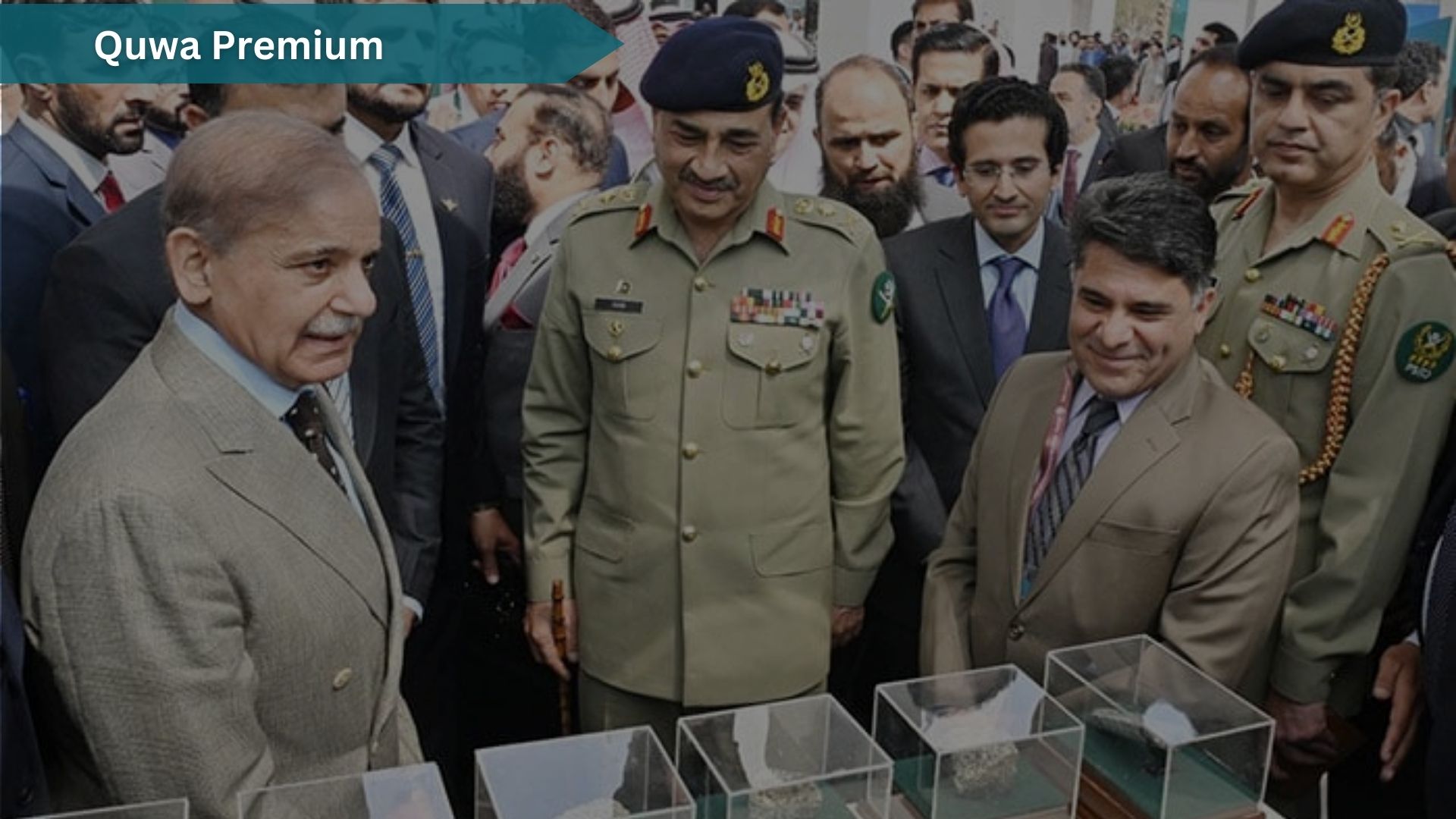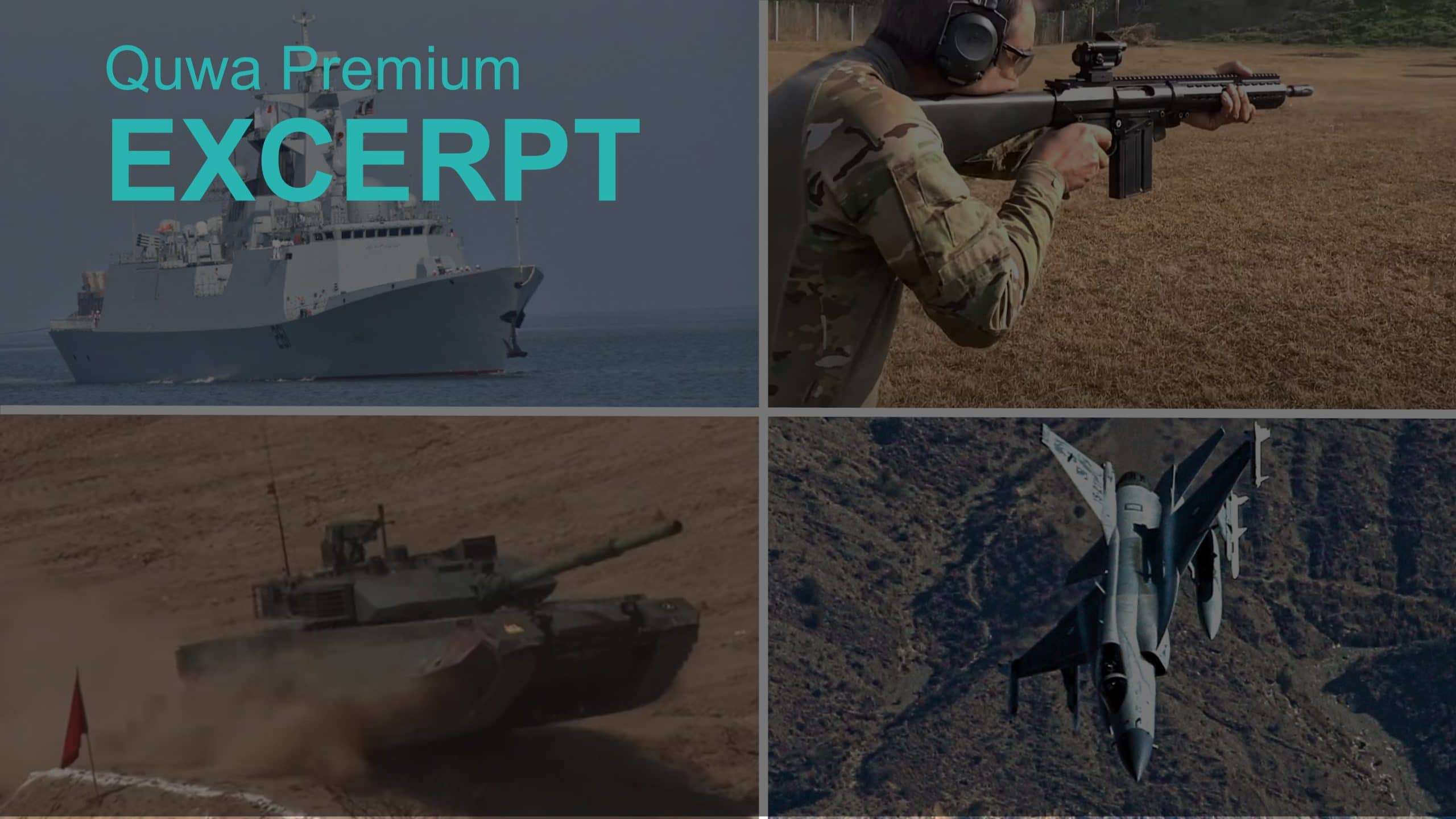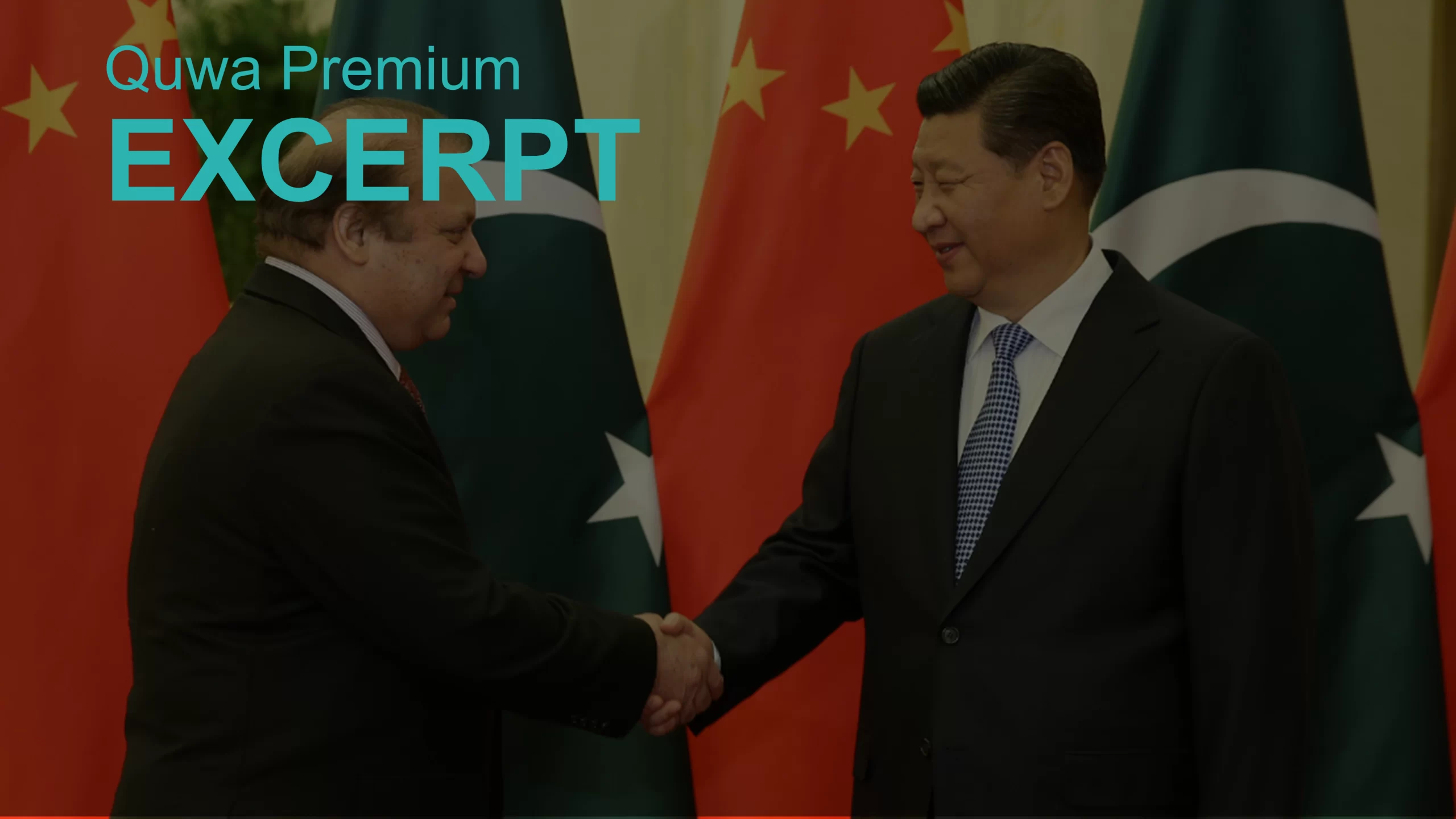10248Views

Pakistan’s Mineral Gambit: Leveraging Resources to Reshape U.S. Ties? Quwa Premium
In recent months, there has been a noticeable uptick in high-level engagement between the United States and Pakistan, pivoting significantly around Pakistan’s largely untapped mineral sector.
The visit of senior U.S. State Department officials, including Eric Meyer, Acting Assistant Secretary for South and Central Asian Affairs, coinciding with the inaugural Pakistan Minerals Investment Forum (PMIF25) held 8-9 April, 2025, signals a distinct American interest in the country’s resource potential.
This diplomatic focus emerges within the broader context of a U.S.-Pakistan relationship frequently described as navigating a “new, and low, normal.”
Following the U.S. withdrawal from Afghanistan in 2021, high-level political engagement has become sparse, reflecting Pakistan’s perceived reduced strategic importance to Washington.
Yet, cooperation persists in specific, often lower-profile areas, notably counter-terrorism (CT) efforts against groups like Tehreek-e-Taliban Pakistan (TTP) and ISIS-Khorasan, alongside initiatives like the US-Pakistan Green Alliance Framework focused on climate and agriculture.
This renewed focus on minerals raises a key question: Is Pakistan embarking on a deliberate strategy to leverage its considerable, albeit underdeveloped, mineral wealth to fundamentally reshape its relationship with the United States? Is Islamabad attempting to pivot towards a relationship centered on economic and resource security, rather than transactions?
Pakistan's Mineral Potential: Hype vs. Reality
The cornerstone of Pakistan’s pitch to international investors is the assertion of vast, untapped mineral wealth. Official narratives, amplified during events like PMIF25 and in briefings to the federal cabinet, frequently cite staggering estimates of the country’s total mineral reserves, recently escalating from $6 trillion to as high as $8 trillion.
This narrative frames minerals – encompassing resources like copper, gold, lithium, rare earth elements (REEs), coal, and salt – as the key to unlocking national economic transformation and achieving self-sufficiency.
The government, particularly through the civil-military Special Investment Facilitation Council (SIFC) established in 2023, is actively promoting this vision to attract the foreign direct investment deemed necessary to exploit these resources.
However, a critical examination reveals a significant disparity between these ambitious headline figures and more verifiable, project-specific valuations.
The Reko Diq copper-and-gold project in the Chagai district of Balochistan remains the undisputed flagship asset and the primary tangible evidence supporting claims of world-class mineral potential.
An updated feasibility study, finalized in early 2025, provides concrete estimates for this specific project: recoverable reserves are projected at 13.1 million tonnes of copper and 17.9 million ounces of gold over an anticipated mine life of 37 years.
Based on high metal prices prevailing in March 2025, the in-ground value of these specific Reko Diq reserves was calculated by one analyst group at approximately $215 billion.
Other metrics offer different perspectives: Barrick Gold CEO Mark Bristow, head of the project’s 50% owner/operator, publicly cited an initial estimated project value of $70 billion, with potential to double, while other reports mention projected free cash flow of $74 billion over the mine’s lifecycle.
While these figures confirm Reko Diq as a significant deposit, they also highlight the vast gulf between a single, albeit massive, project and the multi-trillion dollar national estimates.
The basis for the larger $6-8 trillion figures remains opaque in recent reporting, likely representing highly optimistic, aggregated potential in-ground values of all known or suspected mineral occurrences across Pakistan, rather than proven, economically recoverable reserves under current conditions.
Verifying such claims is hampered by the historical underinvestment in comprehensive, modern geological surveying across the country. Furthermore, the immense value proposition of Reko Diq must be tempered by its long-term timeline; first production is targeted for 2028, with full ramp-up a few additional years away and projected cash flow spread over nearly four decades.
The current economic reality further underscores this gap.
Despite the proclaimed potential, Pakistan’s mining and quarrying sector presently contributes only around 2-3% to the country’s GDP, with mineral exports forming a negligible share of global trade (approx. 0.1%).
Transforming potential into significant, near-term economic benefit requires overcoming major challenges in exploration, extraction, processing, infrastructure, and security.
For policymakers evaluating Pakistan’s strategy, recognizing the distinction between promotional rhetoric and the grounded realities of project development timelines and existing economic contributions is crucial.
Reko Diq is a vital anchor, but its economic impact will be gradual and long-term. The broader multi-trillion potential remains largely speculative, one pending extensive exploration and development.
Why Economic Security Through Minerals?
Pakistan’s intensified focus on mineral development, actively driven by the SIFC – a hybrid body designed to fast-track investment decisions by involving both civilian and military leadership – stems from a strategic imperative: the pursuit of economic security and reduced external dependency.
Pakistan’s leadership (notably Prime Minister Shehbaz Sharif) explicitly links harnessing mineral wealth to stabilizing the nation’s economy, overcoming recurrent balance-of-payments crises, lessening reliance on international financial institutions like the IMF (Pakistan is currently navigating its 25th IMF program), and ultimately achieving greater strategic autonomy.
This represents a conscious effort to reset Pakistan’s international value proposition beyond its traditional, often transactional, role as a security partner in regional conflicts.
End of excerpt (820/2,397 words).
Existing Quwa Premium members can log in below
Note: Logged in members may need to refresh the article page to see the article.


